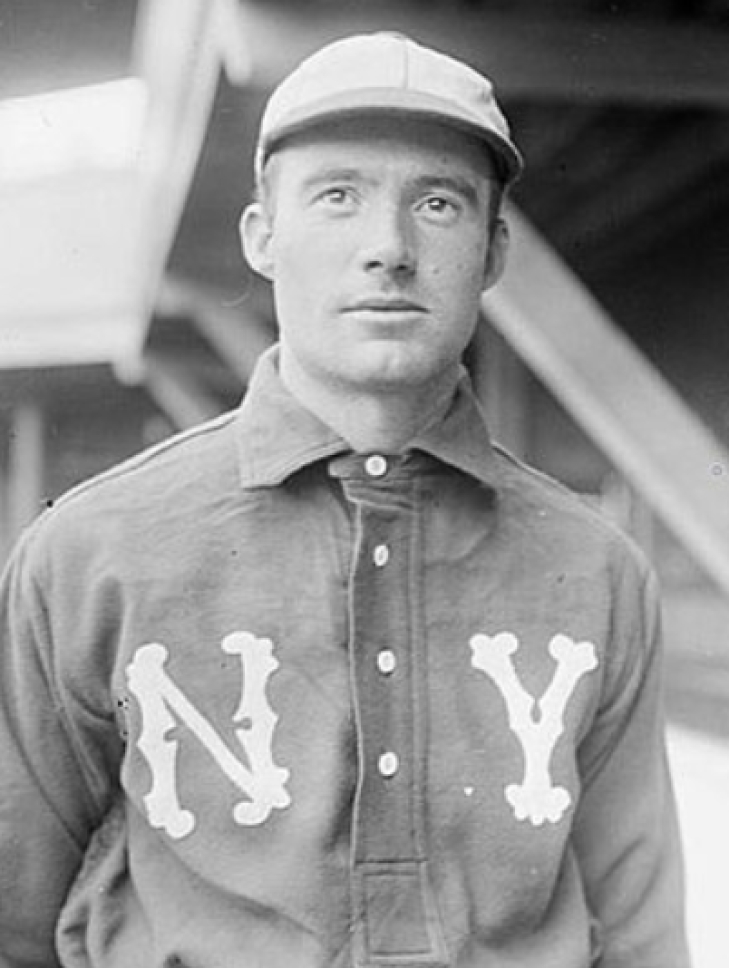
Committee Chairman
The Impact of Wearable Technology in Sports Equipment: Smarter and Safer Designs for Athletes
As technology advances, the world of sports gear and equipment is undergoing a revolutionary transformation. From smart wearables that monitor performance to safer materials that protect athletes, the future of sports gear is all about innovation. These cutting-edge designs not only enhance athletic performance but also prioritize safety and sustainability, addressing the evolving needs of athletes and enthusiasts.
Join banger casino online and let’s dive into the emerging trends shaping the future of sports gear and explore how they’re making sports smarter, safer, and more sustainable.
Smarter Gear for Enhanced Performance
Smart Wearables
Technology-integrated wearables are redefining how athletes train and perform by providing real-time data and actionable insights.
- Performance Tracking:
Devices like GPS-enabled watches, heart rate monitors, and biomechanical sensors offer detailed metrics on speed, distance, and physical exertion. - Customized Feedback:
Smart insoles and compression gear analyze movement patterns, helping athletes correct posture and improve efficiency.
Example:
The WHOOP strap tracks an athlete’s recovery, sleep patterns, and strain levels, enabling optimized training schedules.
Advanced Analytics
Smart equipment integrates with mobile apps and cloud platforms, allowing athletes and coaches to analyze performance trends over time.
- Video-Assisted Insights:
Devices like smart tennis rackets and golf clubs collect swing data, enabling detailed breakdowns of technique. - Predictive Capabilities:
AI-powered tools forecast potential injuries or fatigue, allowing proactive adjustments to training regimens.
Example:
The Wilson X Connected Basketball tracks shooting accuracy and provides drills to improve performance via a companion app.
Safer Designs for Injury Prevention
Protective Gear with Smart Features
Modern protective equipment combines advanced materials with sensors to enhance safety without compromising comfort.
- Impact Sensors:
Helmets with built-in sensors measure the force of impacts, alerting athletes to potential concussions. - Dynamic Padding:
Innovations like liquid shock-absorbing materials adapt to varying impact levels, offering superior protection.
Example:
The Riddell Smart Helmet, used in football, detects and logs head impacts, aiding in injury prevention and research.
Ergonomic and Lightweight Materials
The use of lightweight, durable materials ensures better protection and comfort for athletes.
- Carbon Fiber and Kevlar:
Helmets, shin guards, and body armor incorporate these materials for high strength-to-weight ratios. - Enhanced Fit:
Custom-molded equipment like mouthguards and knee braces reduce pressure points and improve overall safety.
Example:
G-Form’s Reactive Protection Technology (RPT) pads remain flexible during movement but harden upon impact, offering exceptional protection for extreme sports athletes.
Sustainable Innovations in Sports Gear
Eco-Friendly Materials
Sustainability is becoming a key focus, with brands embracing environmentally conscious manufacturing processes.
- Recycled Components:
Companies are using recycled plastics, rubber, and organic fabrics to create durable sports gear. - Biodegradable Alternatives:
Innovations like compostable running shoes and plant-based fibers reduce the environmental impact of sports equipment.
Example:
Adidas’ Futurecraft Loop running shoes are made entirely from recyclable materials, designed for a circular lifecycle.
Energy Efficiency
Smart equipment is being designed with energy efficiency in mind to minimize its ecological footprint.
- Self-Powered Devices:
Wearables that harvest kinetic energy eliminate the need for batteries. - Sustainable Packaging:
Brands are reducing packaging waste by adopting minimal and recyclable materials.
Example:
Pavegen tiles in sports arenas convert footsteps into energy, powering lights and displays sustainably.
Inclusive and Adaptive Equipment
Designs for All Abilities
Adaptive sports gear ensures inclusivity by catering to athletes with disabilities.
- Customized Prosthetics:
Advanced prosthetics are designed for specific sports, such as running blades or swimming fins. - Wheelchair Innovations:
Lightweight, aerodynamic wheelchairs enhance speed and maneuverability for sports like basketball and racing.
Example:
Össur’s Flex-Foot Cheetah prosthetic is widely used by Paralympic sprinters for its optimal energy return and performance.
Gender-Specific Gear
Brands are developing sports gear tailored to different body types and biomechanics.
- Women-Centric Designs:
Sports bras with built-in heart rate monitors and gear that accommodates female-specific anatomical needs. - Unisex Options:
Gear designed for versatility and inclusivity caters to a broader range of users.
Example:
Nike’s Pro Hijab provides a breathable, performance-driven option for female Muslim athletes, ensuring comfort and mobility.
The Role of AI and VR in Sports Gear
Virtual Training Simulations
Virtual reality (VR) and augmented reality (AR) enhance training experiences by simulating real-game scenarios.
- Skill Development:
VR headsets allow athletes to practice decision-making and strategy in lifelike virtual environments. - Interactive Coaching:
AR-enabled glasses display real-time feedback on technique, helping athletes make immediate adjustments.
Example:
STRIVR’s VR training system is used by NFL teams to simulate plays and improve player awareness.
AI-Driven Customization
AI helps create personalized sports gear that adapts to an athlete’s unique needs.
- 3D Scanning:
AI-powered tools measure precise body dimensions for tailored gear, ensuring a perfect fit.X$ - Dynamic Adjustments:
Smart shoes and apparel adapt in real-time to provide optimal support and comfort.
Example:
Under Armour’s HOVR running shoes feature embedded chips that track performance and offer AI-based coaching tips.
The Future: What’s Next in Sports Gear
Wearable Robotics
Exoskeletons and wearable robotics could redefine sports performance and recovery.
- Performance Boost:
Robotic suits could enhance strength, speed, and endurance for athletes. - Injury Rehabilitation:
Exoskeletons help injured athletes recover faster by supporting movements during therapy.
Example:
ReWalk’s robotic exoskeleton aids in mobility for rehabilitation and could pave the way for similar advancements in sports.
Hyper-Personalized Gear
Future sports equipment will increasingly cater to individual preferences and conditions.
- Smart Textiles:
Clothing with embedded sensors will monitor hydration, temperature, and muscle fatigue. - Biomechanical Adaptations:
Gear will dynamically adjust to suit specific terrains, weather conditions, or activity intensity.
Example:
Columbia Sportswear’s Omni-Heat technology regulates body temperature based on environmental conditions, a glimpse into fully adaptive clothing.
Conclusion
The future of sports gear and equipment is a thrilling blend of innovation, safety, and sustainability. Smarter designs are enhancing performance, safer materials are protecting athletes, and eco-friendly practices are paving the way for a more sustainable industry. As technology continues to evolve, the possibilities for smarter, safer, and more inclusive sports gear are limitless.
From smarter wearables to safer materials, the next generation of sports gear is not just about winning—it’s about redefining how we play, compete, and protect the planet.
Alex Gordon named to the Kansas City Royals list
Regular visitors of Notinhalloffame.com know that we are slowly working on the top 50 of every major team in the NHL, NBA, NFL, and MLB. Once that is done, we will examine how each team honors its past players, coaches, and executives. As such, it is important to us that the Kansas City Royals will induct Alex Gordon into their franchise Hall of Fame.
Gordon will become the 31st member of the Hall and the event will take place on June 13 when the Royals host the Athletics on June 13.
Gordon was selected by the Royals with the second overall pick in 2005, and needed only two years to make it to the Majors. Originally a Third Baseman, Gordon moved to Leftfield, and would become a three-time All-Star and seven-time Gold Glove winner. Gordon played a large part of Kansas City’s 2015 World Series Championship.
He compiled 1,643 Hits with 190 Home Runs with the Royals.
We here at Notinhalloffame.com would like to congratulate Alex Gordon for his impending honor.
What Caused the Rapid Growth of the Esports Industry?
Over the last decade, esports has grown to become an extremely sought-after industry. So what caused this incredible popularity to rise? Several key factors have helped the rapid growth of esports and made it a dominating force in the entertainment world.
Salient Factors
1 . Online Gaming Ascension
Esports has become a major success because of online gaming. With the high-speed internet developed, players from all over the world can play against each other in real time. This has allowed the creation of a global esports community where players and fans can join, interact with, and play with each other.
2 . Streaming Platforms and Content Creators
Esports have really been boosted by the introduction of live-streaming platforms, such as Twitch, YouTube Gaming, and Facebook Gaming. They provide fans with the chance to watch professional players, learn new skills or the new Fortnite, and talk to their favorite gamers. Esports is largely promoted among streamers and content creators by providing engaging content and creating a dedicated fan base.
3 . Major Investments and Sponsorships
Esports has already been identified by big companies, and they invest a lot in this area. Brands like Coca-Cola, Red Bull, and Intel sponsor major esports tournaments and teams. Esports has been able to grow as event production improved, prize pools increased, and professional players had better opportunities due to this financial support.
4 . Cut-Throat Tournaments and High Rewards
Millions across the globe used to tune in to esports tournaments. World competitions like The International (Dota 2), League of Legends World Championship, and CS: GO Majors in fact have prize pools that go up to multi millions of dollars. Interestingly, these high rewards will help attract more players to take their time and become professionals.
5 . Burgeoning online gaming platforms
Gaming platforms are one of the growing trends in online gaming. There are various leading gaming platforms, such as jalwagame.bet, which let gaming enthusiasts enjoy esports in exciting new ways. It makes the industry that much more entertaining and financially involved as well.
6 . Technological Innovations
The growth of esports has also been fueled by the development of powerful, highly powerful gaming hardware and software. Gaming consoles and high-performance PCs gain the smoothness and immersion of gaming with VR technology. Advanced AI and machine learning also help with improving matchmaking and gameplay in esports to be more competitive and entertaining.
7 . Global Recognition and Media Coverage
In conclusion, as online gaming, streaming platforms, sponsorships, tournaments, and technological developments have improved, the rate at which esports have been growing is extremely fast. With this, the industry will attract even more players and viewers as well as investors. Going forward, esports have the potential to continue growing and innovating in every possible way.
50. George Van Haltren
After the 1893 Season, George Van Haltren’s contract was sold to the New York Giants, and this is where he spent the next seasons, which by far eclipsed the first portion of his career.
A starting Outfielder for most of his time in New York, Van Haltren compiled at least 175 Hits in his first eight years with the Giants and batted over .300 in all of those seasons. A competent hitter, Van Haltren could also do damage on the bases and swiped 320 in New York.
As a Giant, Van Haltren amassed 1,580 Hits with a .321 Batting Average.





